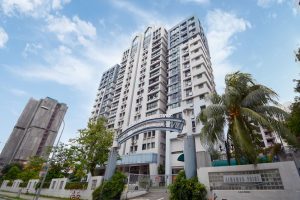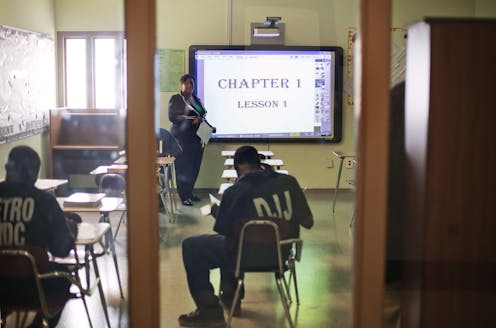By: John Blaxland, ANU/
The latest ASEAN Summit at Singapore follows a significant inflection point in Australia’s relationship with ASEAN associated with the mid-March 2018 ASEAN-Australia Special Summit held in Sydney. While Australia has not been seriously invited to become a member of ASEAN, it was extraordinary to hear Indonesian President Joko Widodo (Jokowi) and former Malaysian prime minister Mahathir Mohamad be more welcoming of Australia in ASEAN circles. Two decades ago, this would have been unimaginable.
Australian Prime Minister Malcolm Turnbull shakes hands with Prime Minister of Singapore Lee Hsien Loong during their media conference during the one-off summit of 10-member Association of Southeast Asian Nations (ASEAN) in Sydney, Australia on 18 March 2018. (Photo: Reuters/ David Gray).
The change speaks to a shift in how Australia is perceived in the region. Australia should aspire to be designated an ASEAN Community Partner, says Graeme Dobell, in recognition of the unique and special relationship that Australia has with ASEAN. This is in large part because of their shared geography and also in recognition of Australia’s growing attentiveness and focus on the neighbourhood. Dobell’s idea has generated strong reactions, with some commentators for it and others against. This concept fundamentally draws attention to the intimate and growing ties between Australia and ASEAN as well as their shared future. Such a vision would have been unthinkable a generation earlier.
Just over fifty years since the end of the White Australia policy, Australia now has about one million people with strong links with Southeast Asia — a number closely matching the million or so each with links to South Asia and Northeast Asia. Australia’s Race Discrimination Commissioner and the son of refugees from Laos Dr Tim Soutphommasane is right to point to the still fractional representation of diversity at the senior echelons of the Australian business community. But a growing body of Australians with links to Southeast Asia and Asia more broadly (now about 12 per cent of the Australian population) are well placed to have a greater say and influence in how Australia becomes more closely integrated with its own neighbourhood.
Jokowi has described Indonesia as a ‘maritime fulcrum’. But perhaps this term applies more broadly to the space shared by Southeast Asia and Australasia. As maritime trade routes through Southeast Asia and across the Pacific and Indian Oceans grow in significance, the Indo-Pacific space shared by ASEAN and Australasia is increasingly busy, lucrative and contested.
Some have complained that Southeast Asian dictators should have been reprimanded rather than feted in Sydney. Critics rightly decried the inadequate human rights records and other political shortcomings of many of the ASEAN member states. But the summit was not the time to dwell on the differences and disagreements with public pronouncements. Rather it was a time to consider what is shared, what is held in common and what can be done collaboratively in the future.
In Southeast Asia form precedes function. Respect has to be shown for it to be reciprocated. And key to the showing of respect is in handling differences with discretion so as to avoid the public loss of face. Megaphone diplomacy might make some Australians feel smug and self-righteous, but it does little to open doors for engagement and substantive reform.
Indeed, despite the avoidance of public discussion on sensitive and embarrassing issues like the Rohingya crisis, the very gathering together at such forums and the one-on-one meetings on the sidelines have provided significant opportunities for Australia. Australian officials, academics and others have used these opportunities to engage respectfully but with conviction on a range of issues for which the alternative megaphone diplomacy is counterproductive.
The ASEAN–Australia Dialogue and the ASEAN–Australia Special Summit reflect a recent trend: the growing recognition that Australia has to find a way to get along better with its neighbours for a variety of reasons. Australia’s prosperity is intimately tied to the security, stability and prosperity of its neighbourhood. Non-traditional security threats to Southeast Asia and the South Pacific are increasingly understood as being linked to the security and prosperity of Australia itself.
While ASEAN has proven to be a useful forum for humanitarian assistance and disaster relief coordination and counterterrorism initiatives, the centrality of ASEAN may be challenged by great power contestation. Some critics decry ASEAN as a ‘broken reed’ that is divided over the South China Sea and ineffective as a collective security bloc in the face of apparently unrelenting Chinese pressure. But such critics misread ASEAN’s raison d’etre and underestimate the significance of the body’s economic, political, social and cultural achievements.
Despite extraordinary economic, demographic, historical, legal, linguistic, cultural, religious and ethnographic diversity, the motto ‘unity in diversity’ still rings loudly — as much as an aspirational statement as it is a motto. The world would be less secure and prosperous if ASEAN were to disappear.
After all, ASEAN includes US treaty allies and other security partners. It includes Christians, Buddhists, Muslims, Animists and others. It uses English as its common language. It is Australia’s front yard. Australians skip over it on our way elsewhere without recognising that, when aggregated, it is Australia’s third largest trading partner and one of Australia’s leading sources of migrants and students. Australians are slowly adjusting to the fact that they are not living in some kind of metaphorical mid-Atlantic.
Despite genuine concerns over the divergence of interests over issues like democratisation and human rights, today the interests of Australia and ASEAN overlap to an unprecedented degree. Shared geography is the key driver, but other factors feature prominently as well. Trade links, for instance, are more substantial than ever, with ASEAN being Australia’s third largest trading partner. Security links have been growing significantly as well, linked with the expanding Australian Defence Cooperation Program and Australia’s engagement with a range of security issues associated the ASEAN Defence Ministers Meeting (ADMM) Plus construct. These arrangements have witnessed growing ties over humanitarian assistance and disaster relief, piracy, terrorism, people smuggling, refugee flows, and illegal, unregulated and unreported fishing, let alone concerns over great power contestation. Sure, considerable differences remain, particularly concerning democracy and human rights. But, like Australia, the ASEAN states struggle to reconcile competing geostrategic and economic priorities, valuing the burgeoning trade ties with China while still valuing the enduring US contribution to stability that has been the great facilitator of prosperity. Along the way, they are finding they have more interests and concerns in common than ever.
In the past, Australia sought security from Asia. That world has gone. Australia nowadays must increasingly find security, stability and prosperity in and through Asia. Australia’s links with Southeast Asia and ASEAN are therefore of fundamental importance for its future.
—
John Blaxland is Professor of International Security and Intelligence Studies at the Strategic and Defence Studies Centre and Director of the Southeast Asia Institute, The Australian National University.
This article first appeared on the East Asia Forum.





















